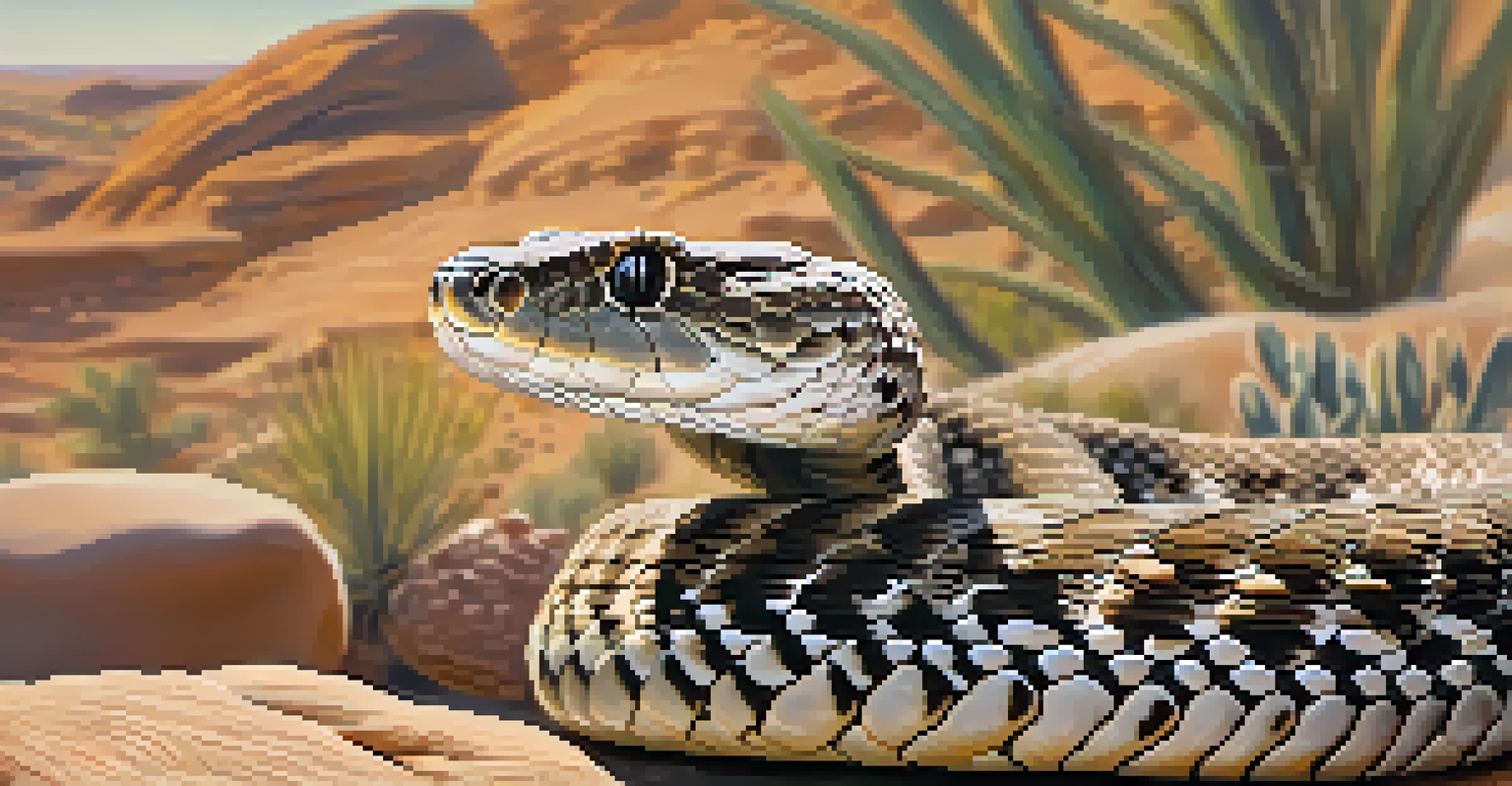Wildlife Safety Tips While Hiking in the Palm Springs Area

Understanding Local Wildlife Before You Hike
Before heading out on your hiking adventure in Palm Springs, it's crucial to understand the local wildlife. This area is home to a variety of animals, including snakes, mountain lions, and coyotes. Familiarizing yourself with these creatures can help you react appropriately should you encounter them during your hike.
In every walk with nature one receives far more than he seeks.
For instance, knowing that rattlesnakes may be sunbathing on warm rocks can remind you to watch your step. Similarly, being aware that mountain lions are generally elusive but can be present in the area will prepare you for potential encounters. The more you know, the better equipped you'll be to handle any wildlife situations you might face.
Remember, wildlife is generally more afraid of humans than we are of them. If you understand their behavior and habitats, you can enjoy your hike while reducing the risks associated with wildlife encounters.
Stay on Designated Trails for Safety
One of the simplest yet most effective ways to stay safe while hiking is to stick to designated trails. These paths are often well-marked and maintained, reducing the chance of unexpected wildlife encounters. By staying on these trails, you also minimize your impact on the environment, preserving the natural habitat for the wildlife that lives there.

Venturing off the trails can lead to unexpected surprises, like running into a nesting animal or disturbing a snake. Moreover, trail systems are designed to guide hikers through safer areas, away from dense underbrush where wildlife might be hiding. Staying on the path not only protects you but also helps keep the local ecosystem intact.
Understand Local Wildlife Safety
Familiarizing yourself with local wildlife behaviors can enhance your hiking experience and reduce risks during encounters.
Additionally, following marked trails makes it easier for others to find you in case of an emergency. This simple practice enhances your safety and ensures that you remain part of the broader conservation efforts in the Palm Springs area.
Make Noise to Avoid Surprising Wildlife
When hiking in areas known for wildlife, making noise can be a simple yet effective strategy to prevent surprising animals. Loud conversations, clapping, or even humming can alert creatures to your presence before you get too close. This is especially important in areas where animals may be hidden from view.
Wildlife is a precious resource that must be protected for future generations.
For example, if you're hiking through a quiet canyon, your casual chatter might be enough to keep a curious mountain lion at bay. Animals typically prefer to avoid humans, so a little noise can go a long way in keeping both parties safe. Plus, it can enhance your hiking experience by engaging in conversation with your hiking buddies!
However, be mindful of the volume—excessive noise can disturb both wildlife and other hikers. So, while it's good to make some sound, be respectful of your surroundings and keep the noise at a reasonable level.
Carry Bear Spray and Know How to Use It
While Palm Springs may not be the first place you think of when it comes to bear encounters, it's still wise to be prepared. Carrying bear spray is a proactive measure that can give you peace of mind while hiking. If you do come across a bear, having this deterrent can be crucial to your safety.
It's not just enough to carry bear spray; knowing how to use it effectively is just as important. Familiarize yourself with the product before your hike—practice removing the safety tab, and know the distance it can spray. This knowledge can be invaluable in a high-pressure situation, ensuring you can act quickly if needed.
Stick to Designated Trails
Staying on marked trails helps protect both you and the local ecosystem while minimizing unexpected wildlife encounters.
Bear spray can help create a barrier between you and the bear, allowing you to back away slowly and safely. Always remember to stay calm, as panicking can lead to poor decision-making. Preparation is key to enjoying the great outdoors without unnecessary fear.
Never Feed Wildlife—It Can Be Dangerous
Feeding wildlife might seem harmless, but it can lead to dangerous situations for both you and the animals. When animals associate humans with food, they may approach hikers more frequently, increasing the risk of encounters. This behavior can lead to aggressive interactions, especially if the animal feels threatened or cornered.
Additionally, feeding wildlife disrupts their natural foraging habits, which can have long-term impacts on their survival. For instance, animals that rely on human-provided food may not learn to hunt or forage effectively, putting their health at risk. By leaving wildlife to fend for themselves, you contribute to a healthier ecosystem.
If you want to observe wildlife, do so from a distance, and enjoy the beauty of nature without interfering. Remember, it's our responsibility to protect wildlife by respecting their natural behaviors and habitats.
Keep Your Pets Leashed and Under Control
While hiking with pets can be a delightful experience, it's essential to keep them leashed and under control. Loose pets can easily provoke wildlife, leading to dangerous encounters for both your pet and the animals. A curious dog might chase after a deer, or even a rattlesnake, putting itself at risk.
Moreover, many areas in Palm Springs have specific regulations regarding pets on trails. Following these rules not only protects your furry friends but also helps maintain the natural balance of the ecosystem. Keeping pets leashed reduces the likelihood of disturbing wildlife, allowing for safer hikes for everyone.
Do Not Feed Wildlife
Feeding wildlife can create dangerous situations and disrupt their natural behaviors, harming both animals and hikers.
Always be vigilant about your pet's behavior—if they seem overly excited or agitated, it might be time to take a break and reassess the situation. Remember, safety first, for both you and your beloved pet!
What to Do If You Encounter Wildlife
Encounters with wildlife can be thrilling but also a bit nerve-wracking. If you come across an animal, it's important to stay calm and avoid sudden movements. Assess the situation, and if the animal seems uninterested in you, slowly back away without turning your back on it.
If you find yourself face-to-face with a more assertive animal, like a mountain lion, make yourself look larger by raising your arms or backpack. Speak firmly and avoid running, as this might trigger a chase response. Your calm demeanor can often signal to the animal that you're not a threat.

After the encounter, it's a good idea to report it to park rangers or local authorities. Sharing your experience can help them monitor wildlife behavior and inform other hikers about potential risks. Remember, encounters can be managed safely with the right knowledge and approach.